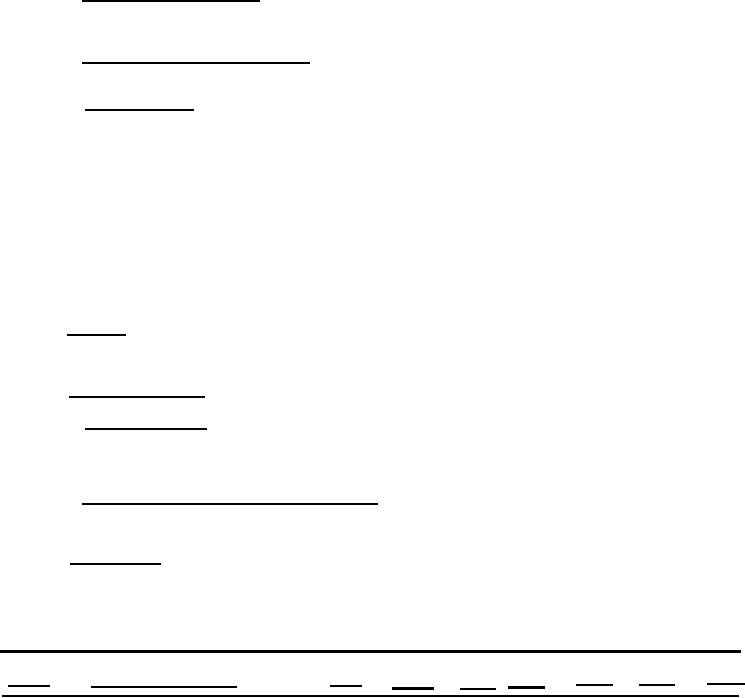
MIL-STD-168B
26 May 1969
3.3.4 Above maximum dimension. Above maximum dimension refers to the upper dimension limit in
the contract, order, or specification under which the glove is purchased. The dimensions specifically
covered are: length, size, and thickness.
3.3.5 Allowable dimension of the defect. In determining "over" or "under" for the type of defect, the
largest dimension in any direction governs.
3.3.6 Misidentification. Misidentification is incorrect, missing, or illegible identification.
4. GENERAL REQUIREMENTS
4.1 Enlarged photographs of representative major and minor defects are included to aid the inspectors.
All photographs are listed in order in LIST OF FIGURES and indexed in table I according to figure number,
type of defect, area of defect and classification of defect. (Major or minor)
4.2 It should be borne in mind that this standard has included photographs of only the most common
surface defects that might occur during the fabrication of all-rubber gloves. It is not feasible to obtain
examples of all possible defects; further, the defects mentioned in this standard do not abrogate requirements
of a particular specification, contract or order.
5. DETAIL REQUIREMENTS
5.1 Sampling. All gloves shall be subjected to one or more MIL-STD-105 sampling procedures, as
specified by the purchaser, except where the material specification includes a sampling plan. Acceptance
or rejection of the lot , sub-lot, or batch shall be on the same basis.
5.2 Inspection procedure. The following order of procedure is suggested.
5. 2.1 Surface inspection. The primary purpose of this test is to check the general quality of the vul-
canizate by visual inspection. Each of the sample pairs of gloves taken in accordance with 5.1 shall be
subjected to thorough surface examination, inside and out, for construction, identification marking, visual
d e f e c t s and workmanship.
5.2.2 Measurement of length, size, and thickness. Length, size and thickness of the gloves shall be
measured as specified by the contract, order, or specification under which the glove is purchased. If no
method is specified, use ASTM-D-120.
5.3 Classification. The gloves covered by this standard are divided into four main classes as to usage;
that is, electrical, acid, solvent, and general purpose, as shown in tables I and II and on figures 1 to 29,
inclusive. The degree of seriousness of a defect depends upon the protection required in service. Acid and
solvent classes are combined under one heading as their service protection requirements are similar.
Table I - Classification of visual defects
General purpose
Electrical
Acid and solvent
Minor
Minor
Major
Area
Major Minor Major
Description of defects
Figure
Abrasion bruise below minimum
1 and 2
x
x
x
thickness . . . . . . . . . . . . . . Hand
Abrasion bruise below minimum
3
x
x
Wrist
x
thickness . . . . . . . . . . . . . .
4
Acid cut below minimum thick-
x
x
x
Hand
ness . . . . . . . . . . . . . . . . . .
2
For Parts Inquires submit RFQ to Parts Hangar, Inc.
© Copyright 2015 Integrated Publishing, Inc.
A Service Disabled Veteran Owned Small Business